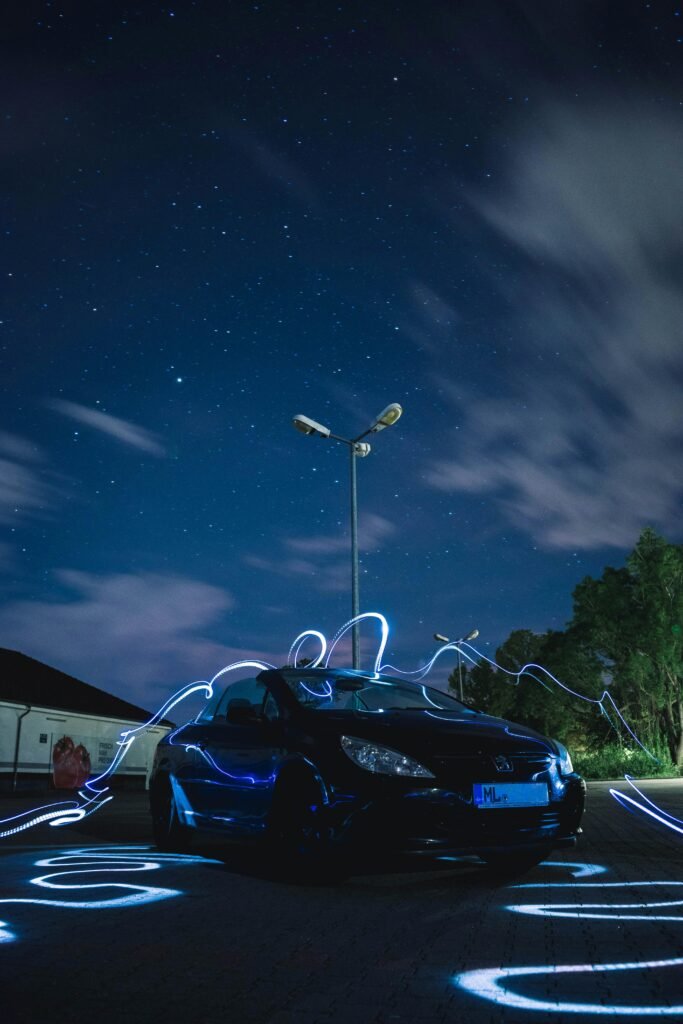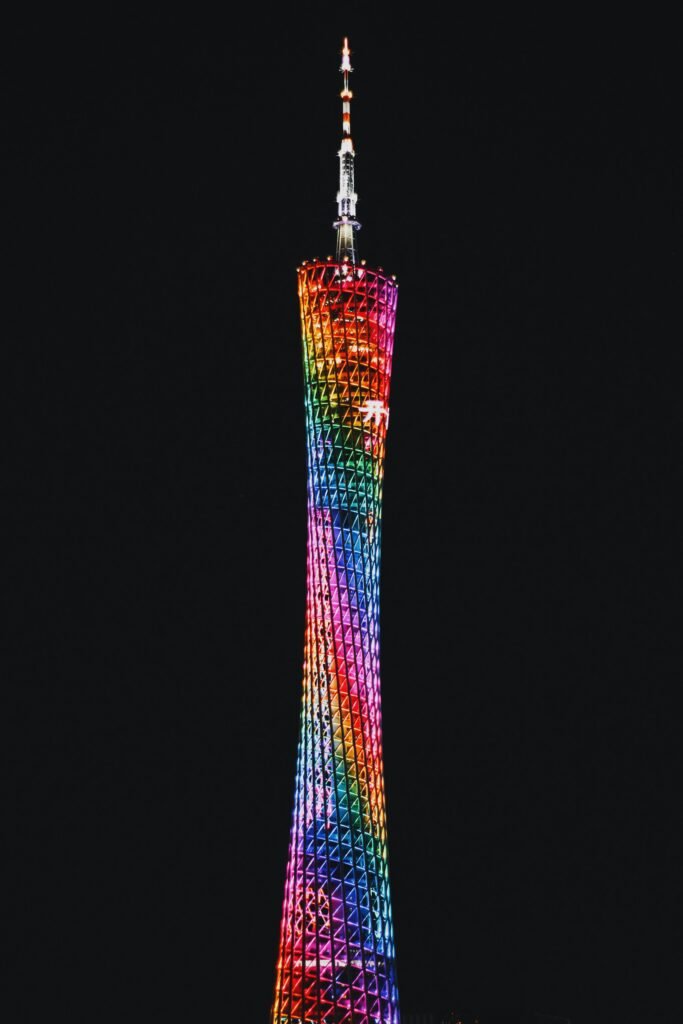Looking to brighten up your knowledge on sustainable lighting design? Look no further! In this illuminating article, we will explore the exciting world of sustainable lighting design and how it is shaping the future. From energy-efficient LED bulbs to innovative daylight harvesting techniques, you will discover the fascinating ways in which designers are bringing light and sustainability together. So, grab your reading glasses and join us on this enlightening journey into the world of sustainable lighting design.
1. Importance of Sustainable Lighting Design
1.1 Reducing Energy Consumption
Sustainable lighting design plays a crucial role in reducing energy consumption. Traditional lighting systems, such as incandescent bulbs, consume a significant amount of energy and contribute to high electricity bills. By adopting sustainable lighting practices, you can significantly decrease your energy usage and cut down on costs. Energy-efficient lighting, such as LED bulbs, consumes up to 75% less energy than traditional lighting options. By embracing sustainable lighting design, you can contribute to a greener future by conserving valuable resources.
1.2 Minimizing Environmental Impact
Another key aspect of sustainable lighting design is its ability to minimize environmental impact. Traditional lighting sources, particularly incandescent bulbs, emit a large amount of greenhouse gases and contribute to global warming. Sustainable lighting technologies, such as LED lighting and solar-powered lighting, emit significantly fewer greenhouse gases and have a much smaller carbon footprint. By transitioning to more sustainable lighting options, you can help reduce air pollution and combat climate change, contributing to a healthier planet.
1.3 Enhancing Well-being and Safety
In addition to energy efficiency and environmental benefits, sustainable lighting design also focuses on enhancing well-being and safety. Proper lighting levels are essential to creating a comfortable and safe environment. Insufficient lighting can lead to increased eyestrain, decreased productivity, and even accidents. Sustainable lighting design emphasizes the use of appropriate lighting levels for different spaces, ensuring optimal visibility and reducing the risk of accidents. Moreover, certain lighting technologies, such as circadian lighting, can positively impact our well-being by mimicking natural daylight and supporting our natural sleep-wake cycles.
2. Principles of Sustainable Lighting Design
2.1 Energy Efficiency
Energy efficiency is a fundamental principle in sustainable lighting design. By selecting energy-efficient lighting systems, such as LED bulbs, you can significantly reduce energy consumption. LED bulbs consume much less energy compared to traditional incandescent bulbs, and they have a longer lifespan, reducing the frequency of replacements. Moreover, energy-efficient lighting technologies often produce less heat, leading to additional energy savings by reducing the load on air conditioning systems. By prioritizing energy efficiency in your lighting design, you can make a substantial impact on your energy bills and reduce your carbon footprint.
2.2 Use of Natural Light
Incorporating natural light into lighting design is another crucial principle of sustainability. Natural light is not only a free and abundant resource but also offers numerous benefits to health and well-being. By strategically designing spaces to maximize natural light penetration, you can minimize the need for artificial lighting during daylight hours. Utilizing windows, skylights, and light shelves can help channel natural light deep into a building, reducing the reliance on electric lighting. Additionally, natural light has been shown to enhance mood, increase productivity, and improve overall comfort in indoor environments.
2.3 Proper Light Levels
Achieving proper light levels is essential for creating functional and comfortable spaces while minimizing energy waste. Over-illuminated spaces not only waste energy but can also cause discomfort and glare, leading to eye strain and reduced productivity. Conversely, under-illuminated spaces can create feelings of gloom, impair visibility, and increase the risk of accidents. Sustainable lighting design involves carefully determining appropriate light levels for different activities and spaces to ensure both functionality and energy efficiency. By providing the right amount of light, you can create visually appealing and safe environments while minimizing energy consumption.
2.4 Light Pollution Control
Light pollution, also known as artificial sky glow, not only wastes energy but also disrupts natural ecosystems and affects wildlife behavior. Sustainable lighting design seeks to control and minimize light pollution by directing the lighting downwards and reducing unnecessary light spillage. By incorporating appropriate shielding and directing light only where it is needed, you can prevent the wasteful scattering of light into the atmosphere. Implementing proper light pollution control measures ensures that lighting is used efficiently and responsibly, benefiting both humans and the environment.

3. Sustainable Lighting Technologies
3.1 LED Lighting
LED lighting is one of the most significant advancements in sustainable lighting design. LED bulbs have revolutionized the lighting industry by offering numerous benefits. Firstly, LED bulbs are highly energy-efficient, consuming significantly less energy compared to traditional incandescent bulbs. Secondly, LEDs have an exceptionally long lifespan, reducing the frequency of replacements and waste generation. Additionally, LED lighting has improved light quality, providing better color rendering and controllability. By adopting LED lighting, you can save energy, reduce maintenance costs, and enjoy high-quality lighting in your space.
3.2 Solar-Powered Lighting
Solar-powered lighting is another sustainable lighting technology that harnesses the power of the sun to generate electricity for lighting needs. Solar panels collect sunlight and convert it into electrical energy, which can be stored in batteries and used to power lights during the night. Solar-powered lighting systems are particularly popular in outdoor settings such as gardens, pathways, and parking lots, where access to electrical grids may be limited. By utilizing solar-powered lighting, you can lower energy consumption, reduce reliance on traditional power sources, and benefit from cost savings in the long run.
3.3 Daylight Harvesting
Daylight harvesting is an innovative sustainable lighting technique that utilizes natural light to supplement or replace artificial lighting. This technique involves incorporating sensors and control systems that adjust electric lighting levels based on the available natural light. By harnessing natural light through automated dimming or switching off artificial lights when sufficient daylight is present, daylight harvesting can significantly reduce energy usage. Not only does this technology save energy, but it also creates dynamic and visually pleasing lighting environments that enhance occupant comfort.
3.4 Smart Lighting Systems
Smart lighting systems are a technological advancement that contributes to sustainable lighting design. These systems utilize advanced controls and sensors to optimize lighting settings based on occupancy, daylight levels, and specific user preferences. Smart lighting systems often include features such as dimming controls, motion sensors, and scheduling capabilities, allowing for precise control and customization of lighting conditions. By adapting lighting levels to the specific needs of the space and its occupants, smart lighting systems improve energy efficiency, enhance user comfort, and reduce unnecessary energy consumption.
4. Lighting Design Strategies for Sustainability
4.1 Task Lighting
Task lighting is a specific type of lighting design strategy that focuses on providing lighting precisely where it is needed for specific tasks. By directing light to specific areas or workstations, you can reduce the overall energy consumption by avoiding over-illumination of entire spaces. Task lighting promotes visual comfort, enables better visibility, and helps decrease eye strain and fatigue. Examples of task lighting include desk lamps, under-cabinet lighting in kitchens, and reading lights near seating areas. Incorporating task lighting into your spaces can significantly improve energy efficiency and user comfort.
4.2 Zoning and Dimming Controls
Zoning and dimming controls are effective strategies for optimizing lighting levels and energy consumption in different areas of a building. By dividing a space into various zones and providing separate controls for each zone, occupants have the flexibility to adjust lighting levels according to their needs. Dimming controls allow for adjusting the brightness of lights, reducing energy consumption when full illumination is not required. Combining zoning and dimming controls enables precision in lighting design, ensuring optimal light levels while minimizing energy waste.
4.3 Occupancy Sensors
Occupancy sensors are devices that detect human presence and automatically adjust lighting levels accordingly. These sensors can be installed in rooms, hallways, or other areas where occupancy is intermittent. When occupants leave the area, the sensors detect the absence and dim or switch off the lights to conserve energy. Occupancy sensors are particularly useful in spaces with frequent occupancy changes, such as conference rooms, restrooms, and corridors. By incorporating occupancy sensors into your lighting design, you can ensure lights are only used when needed, reducing energy consumption and costs.
4.4 Light Shelves and Light Tubes
Light shelves and light tubes are architectural features that enhance natural light penetration in buildings, reducing the need for electric lighting. Light shelves are horizontal surfaces located above eye level that reflect and redirect sunlight deeper into a space, effectively increasing the amount of natural light available. Light tubes, also known as light pipes or sun tunnels, are tubular devices that capture natural light from the roof and transport it through reflective surfaces into interior spaces with limited access to windows. By incorporating light shelves and light tubes into building design, you can maximize daylight utilization and decrease reliance on artificial lighting.

5. Case Studies on Sustainable Lighting Design
5.1 The Edge Building in Amsterdam
The Edge Building, located in Amsterdam, is a prime example of sustainable lighting design. The building utilizes a combination of sustainable lighting technologies and design strategies to achieve energy efficiency and occupant comfort. A vast array of solar panels on the roof generates renewable energy, powering the building’s lighting needs. LED lighting throughout the building ensures energy-efficient illumination, while advanced controls and sensors optimize lighting levels based on occupancy and daylight conditions. The Edge Building showcases the successful integration of sustainable lighting technologies and design principles, resulting in a highly efficient and visually appealing space.
5.2 The Bullitt Center in Seattle
The Bullitt Center in Seattle is renowned for its commitment to sustainability, including its lighting design. Large windows and skylights maximize natural light penetration, reducing the need for artificial lighting during the day. When electric lighting is necessary, energy-efficient LED fixtures are utilized, minimizing energy consumption. Occupancy sensors and dimming controls further contribute to energy savings by adjusting lighting levels based on occupancy and natural light availability. The Bullitt Center provides a compelling example of a sustainable lighting design that prioritizes both energy efficiency and occupant well-being.
5.3 The Crystal in London
The Crystal, a sustainable cities initiative in London, exemplifies sustainable lighting design on a grand scale. The building incorporates various sustainable lighting technologies, including solar-powered lighting and extensive use of LED fixtures, throughout its vast interior and exterior spaces. The Crystal utilizes daylight harvesting techniques to maximize natural light, reducing reliance on artificial lighting. The lighting design strategically enhances the architectural elements of the building, creating visually stunning and energy-efficient environments. The Crystal serves as an inspiring testament to the possibilities of sustainable lighting design in large-scale projects.
6. Regulations and Certifications for Sustainable Lighting
6.1 LEED Certification
LEED (Leadership in Energy and Environmental Design) certification is a widely recognized standard for green building design and construction. LEED certification considers various aspects of sustainability, including lighting design. It evaluates factors such as energy performance, lighting control systems, light pollution reduction measures, and the use of renewable energy sources. Achieving LEED certification signifies a commitment to sustainable lighting practices and demonstrates compliance with stringent environmental standards.
6.2 ENERGY STAR Program
The ENERGY STAR program, administered by the U.S. Environmental Protection Agency, focuses on energy efficiency and sustainability. It provides certifications for products and buildings that meet strict energy performance criteria. ENERGY STAR certification for lighting products ensures that they meet rigorous standards for energy efficiency and quality. By choosing ENERGY STAR certified lighting products, you can be confident that you are contributing to sustainability through reduced energy consumption and increased energy savings.
6.3 International Energy Efficiency Standards
Various international organizations and regulatory bodies establish energy efficiency standards and regulations for lighting products and systems. These standards aim to promote energy-efficient technologies and ensure consistent performance across different regions. Examples include the International Energy Efficiency Marking Protocol (IEEMP), European Union’s Energy Efficiency Directive, and the International Electrotechnical Commission (IEC) standards. Compliance with these standards and regulations guarantees that lighting products meet specific energy efficiency requirements, further encouraging sustainable lighting practices.

7. Challenges and Opportunities in Sustainable Lighting Design
7.1 Initial Costs and Return on Investment
One of the main challenges in adopting sustainable lighting design is the higher initial costs compared to traditional lighting options. LED bulbs and other sustainable lighting technologies may have a higher upfront cost, which can deter some individuals or businesses from making the switch. However, it is essential to consider the long-term benefits and return on investment of sustainable lighting systems. Energy savings from reduced energy consumption, lower maintenance costs due to longer lifespan, and potential incentives or rebates offered by governments can offset the initial investment and lead to significant cost savings over time.
7.2 Lack of Awareness and Education
Another challenge in sustainable lighting design is the lack of awareness and education regarding the benefits and available options. Many individuals may not be fully aware of the environmental and financial advantages offered by sustainable lighting technologies. Education and awareness campaigns can help bridge this gap by providing information about the positive impacts of sustainable lighting and the various technologies and strategies available. By promoting awareness and providing accurate information, individuals and businesses can make more informed decisions and actively contribute to sustainability efforts.
7.3 Integration with Building Design
Integrating sustainable lighting design into building projects requires careful coordination and collaboration between architects, lighting designers, and other stakeholders. Building design decisions, such as window placement, materials selection, and space planning, can significantly impact the effectiveness and efficiency of sustainable lighting systems. Effective integration of natural light sources, efficient use of space, and optimal placement of lighting fixtures are essential for maximizing energy savings and occupant comfort. By involving lighting professionals early in the design process and considering lighting design as a holistic aspect of building design, successful integration of sustainable lighting practices can be achieved.
8. Future Trends in Sustainable Lighting Design
8.1 Internet of Things (IoT) Integration
The integration of Internet of Things (IoT) technology with lighting systems is an exciting future trend in sustainable lighting design. IoT integration allows for advanced control and monitoring of lighting systems, enabling enhanced energy efficiency and customization. IoT-enabled lighting systems can automatically adjust lighting levels based on occupancy, time of day, and individual preferences. Real-time data collection and analysis provide valuable insights for further optimizing energy use and maintenance. By harnessing the power of IoT technology, sustainable lighting systems can become even more intelligent, responsive, and efficient.
8.2 Circadian Lighting
Circadian lighting, or human-centric lighting, is an emerging trend in sustainable lighting design that focuses on supporting our natural sleep-wake cycles and well-being. Circadian lighting systems mimic the natural progression of daylight, adjusting color temperature and intensity throughout the day. Properly designed circadian lighting can improve alertness, mood, and productivity during the day while promoting better sleep at night. By utilizing circadian lighting, sustainable lighting design can not only save energy but also positively impact human health and well-being.
8.3 Bioluminescent Lighting
Bioluminescent lighting, inspired by naturally occurring bioluminescent organisms, is a potentially revolutionary sustainable lighting technology. These lighting systems utilize genetically engineered bioluminescent sources to produce light without electricity. Bioluminescent lighting can provide soft and warm illumination without the need for conventional power sources or energy-consuming light bulbs. While still in the experimental stage, bioluminescent lighting holds immense potential for sustainable lighting design, offering an alternative to traditional lighting sources that rely on electricity and consume valuable resources.
In conclusion, sustainable lighting design is of utmost importance for reducing energy consumption, minimizing environmental impact, and enhancing well-being and safety. By following the principles of energy efficiency, utilization of natural light, proper light levels, and light pollution control, sustainable lighting design can be achieved. Various sustainable lighting technologies, such as LED lighting, solar-powered lighting, daylight harvesting, and smart lighting systems, offer energy-efficient and environmentally friendly alternatives. Strategies like task lighting, zoning and dimming controls, and occupancy sensors further contribute to sustainability and energy conservation. Examining case studies, regulations, and certifications provides real-world examples and guidelines for implementing sustainable lighting design. Despite challenges, such as initial costs and lack of awareness, opportunities exist to integrate sustainable lighting design into future projects. Future trends, including IoT integration, circadian lighting, and bioluminescent lighting, offer exciting possibilities for further advancements in sustainable lighting design. By embracing sustainable lighting practices, we can create a greener and more sustainable future for generations to come.



